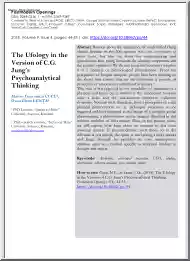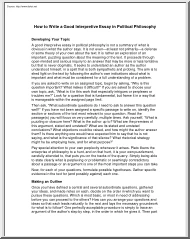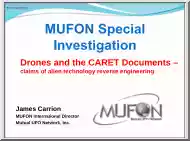A doksi online olvasásához kérlek jelentkezz be!

A doksi online olvasásához kérlek jelentkezz be!
Nincs még értékelés. Legyél Te az első!
Mit olvastak a többiek, ha ezzel végeztek?
Tartalmi kivonat
SCIENTIFIC PROCEEDINGS XIII INTERNATIONAL CONGRESS "MACHINES. TECHNOLОGIES MATERIALS" 2016 - SUMMER SESSION ISSN 1310-3946 GRANULATED FOAM GLASS. PRODUCTION, PHYSICAL AND MECHANICAL PROPERTIES ГРАНУЛИРАНО ПЕНОСТЪКЛО. ПРОИЗВОДСТВО ФИЗИЧНИ И МЕХАНИЧНИ ХАРАКТЕРИСТИКИ Sen. Res Eng Marinov M, Assoc Prof Dr Lakov L, Ph D Eng Kr Toncheva Institute of Metal Science, Equipment and Technologies with Hydro and Aerodynamic Centre E-mail: ma.neshev@hotmailcom Abstract: The article is devoted to an up-to-date material for heat and sound insulation. A technology for production of granulated foam glass from glass waste is developed based on horizontal model of machine for foaming, tempering and cooling granules. Mechanical and thermo-physical indicators for obtained foam glass are investigated. Keywords: GRANULATED FOAM GLASS, FOAMING AGENTS, PROPERTIES 1. Introduction The foam glass is widely used in the form of blocks,
plates, grain of different sizes, components for thermal insulation in construction, shipbuilding, in machines, aggregates as well as for sound insulation, filters and others. [1] The foam glass exceeds the alternative materials (foamdiatomite, ceramic-perlite, perlite cement bond, vermiculite, concrete, mineral wool, glass wool, polystyrene, polyurethane, ceramic fibers) in thermal conductivity, mechanical strength, moisture absorption. It is applicable in construction, shipbuilding, chemical industry, nuclear industry, military industry and other economic sectors. Fig.1 General view of model of horizontal installation for production of granulated foam glass: 1. Adoption station; 2 Submission dosing device for grains; 3 Control panel; 4. Heat and foaming section of the furnace; 5 Venthole of temperature station; 6 Tempering sections of the furnace; 7 Rear station; 8. Conveying belt; 9 Clean modular device; 10 Receiving module finished granules; 11. Control panel; 12 Coated modular
device. 2. Production of granulated foam glass A technology for production of granulated foam glass used for construction of roads, bridges, roof coverings, insulation for foundations of buildings and insulation for pipelines transporting fluids laid in the ground, is in process of development at the IMSETHC-BAS, Sofia. The subject of the development is creation and testing of technology based on the horizontal model for receiving pieces of foam glass granules (50÷100) mm, [2]. Its implementation requires purposeful activity in the following areas: - Establishing the optimum batch compositions, binding additives and pressure by rolling to obtain granules of foam glass; - Formation of granules of different burden compounds; - Development and testing heat-technical characteristics of the process, forming granules and foaming components; - The way for evenly feed the granulated mixture on the conveying belt, position 8 (Fig.1); - Identifying the main characteristics of the horizontal
installation: the rate of heating and cooling in the technological areas (speed of belt movement; type and thickness of the coating on the border granulated foam glass and metal surface of the conveyor belt, aiming high performance and quality of the final product); - Development of design documentation for additional modules to horizontal installation for production of foam glass, [3, 4, 5]; - Development of modules to a horizontal installation; - Conducting technological experiments for settings of the installation and putting into operation an experimental station for production of granulated foam glasses; - Investigating the physical and mechanical characteristics of the obtained granulated foam glasses. Fig. 2 shows a preliminary graphics of "the law" for heating the material in the process of obtaining granulated foam glass in horizontal installation. Fig. 2 Law for the heating the material in the furnace The dosed on the conveyor belt unfoamed granules enter the
working space of the blowing module (furnace with operating temperature, which is adjusted to set values depending on the granules composition). The parameters of blowing module (length) and the speed of the belt movement (20÷30 cm/min) allow a certain point on the moving conveyor belt to stay in the furnace for (6÷10) min. The granules with an initial diameter (5÷10 or 10÷14) mm, increase their diameter 2,5 times. The stabilizing module of the furnace is with circulating air which lowers the temperature of foamed granules from 580◦C to 300◦C, at that lowering the temperature granules stay for (15÷20)min, followed by cooling to a temperature (60÷70)◦C at which temperature they enter the receiver. 59 YEAR XXIV, VOLUME 2, P.P 59-61 (2016) SCIENTIFIC PROCEEDINGS XIII INTERNATIONAL CONGRESS "MACHINES. TECHNOLОGIES MATERIALS" 2016 - SUMMER SESSION 3. Preparation of granules from burdening compounds A, B and C for the Study of physicalchemical and thermo-physical
properties of the finished granulated foam glass [6] ISSN 1310-3946 5. Tests for determination of compressive strength, bending strength, heat conduction, water absorption, of compositions A, B and C [7] 5.1 Compressive strength - determined using a tensile / pressure testing machine, as the sample is evenly loaded with a force perpendicular to its surface. The samples are cubes with length edge of 40 mm. The average values of measured compressive strength of compositions A, B and C are given in Table 1. (1) �Н = P / S0, where: �Н - compressive strength, [MPa]; P - maximum pressure force, [N]; S0 - cross-section of the test sample, [mm2]. Raw material is processed to fractions of 85 % under 63 μm sieve and 15 % fraction (63÷100) μm. Using part of the glass powder having specific surface of (5500-6000)cm2/g micro-granules of three compositions were prepared, by passing the mixture of glass powder and blowing agent through a series of sieves: А/ Mixture containing 100 %
powder from household glass waste fraction under 63 μm – 85 % fraction (63÷100) μm - 15% with 1 % glycerin and 3 % water glass with module 1,2÷1,3 over 100 % and granulated with water glass with module 0,6÷0,8; B/ Mixture containing 100 % powder from household glass waste, fraction under 63 μm - 85% and fraction (63÷100) μm and 5 % CaCO3 over 100 % granulated with water-glass with module (0,8 ÷ 1,0); C/ Mixture containing 100 % powder of glass waste - fraction under 63 μm - 85% and fraction (63 ÷ 100) μm, 15% with added 1 % glycerin, 3 % water glass with module (1.2÷13) and 11 % Al2O3 - fraction below 50 μm, granulated with water glass with a module (0.6 ÷08) Granules from compositions A, B and C are manufactured using disk granulator. The granules of each composition are separated by a set of sieves on fractions: (2÷4; 4÷6; 6÷8; 8÷10, 10÷12, 12÷14 and 14÷16) mm. These are the raw materials which physicochemical and thermo-physical properties were tested.
Experimentally is determined the time of placing the granulated mixture until the time at which optimum foaming is achieved without a process of overheating and occurrence of unwanted deformations, i.e spoiling the spherical form. In cyclic entering into the furnace of cold granules from burdening compound, initial temperature of 800ºC decreases to (770÷780)°C. At this temperature begins process of foaming. This process continues with increasing temperature up to 800ºC. The time for this increase matches with the time for passing of the overall technological process, approximately (5÷8) min, depending on the glass granules size. The tempering is carried out as foam glass granules pass to another zone of the furnace or at (600÷610)°C for (2÷4)min and then – to zone for cooling to room temperature. 5.2 Bending strength - since the samples have rectangular section, the bending strength is calculated by the formula: (2) σог = 3PL / 2bh2, where: σог - bending strength,
[МРа]; P – maximum load of the sample, [N]; L - the distance between axises of rollers, [mm]; b - width of the test specimen, [mm]; h - thickness of test specimen, [mm]. For each composition are made 5 samples with length: l =100 mm, width: b = 30 mm and height: h = 15 mm. The results for compositions A, B and C are presented in Table 1. 5.3 Factor of heat conduction – it is calculated by the formula: (3) λ = Q.a /s τ (t1 – t2), [W/(mK)], where: Q - the quantity of transferred heat, [W]; a - distance between the end surfaces of the sample, perpendicular to the direction of the heat flow, [cm]; s - cross-section of the test sample [cm2]; τ - time, [s]; t1, t2 - temperatures of the end surfaces, [C0], whereupon t1 > t2. The data for the measuring factor of heat conduction are given in Table 1. 5.4 Water absorption – it is calculated by the formula: (4) B = (g1 – g0) / g0 .100, [%], where: B - water absorption, [%]; g1 – weight of the saturated with water sample, [g];
g0 - weight of the dry sample, before the saturation of the sample with water, [g]. Saturation of samples (with a volume of about 5 cm3) is carried out as pieces of foam glass granules were placed in boiling water for 1 hour. During boiling is restored evaporated water The test data are given in Table 1. 4. Preparation of samples for conducting physicalchemical, physical-mechanical and thermos-physical tests Foam glass granules with volumes, which allowing elaboration of samples with suitable dimensions are prepared from compositions A, B and C. For testings as compressive strength and flexural strength the sizes of specimens comply with the requirements of BDS EN 60068 (MIL STD-810-G): cubes, cylinders and rectangular prisms, with proper form and defined dimensions. To determine the heat conduction are made plates with dimensions (140 x 140 x 50) mm with parallel and flat surfaces. For measuring the coefficient of linear thermal expansion are made cylinders with diameter of 7 mm and
length 100 mm from the three compositions A, B and C. Table 1 60 Staff Compress live strength, MPa Bending strength, MPa Factor of heat conduction, W/(m.K) Water absorption, % А 4.41 1.76 0.09 0÷4 B 5.39 2.16 0.12 8÷9 C 4.90 1.96 0.10 2 ÷4 YEAR XXIV, VOLUME 2, P.P 59-61 (2016) SCIENTIFIC PROCEEDINGS XIII INTERNATIONAL CONGRESS "MACHINES. TECHNOLОGIES MATERIALS" 2016 - SUMMER SESSION ISSN 1310-3946 Literature 1. Маринов М, Л Лаков, Технологии и съоръжения за производство на пеностъкло. Обзор, Инженерни науки, 2015, №1, с. 78-92, ISSN 1312-5702 2. ИМСТЦХA “Акад А Балевски“-БАН Създаване и изследване на нова технология и хоризонтален модел за производство на композитни топлоизолационни материали под форма на късове
(едри гранули) пеностъкло от стъклени отпадъци // Проект на ИСУН на ЕС в България, № BG161PO003-1.106-0094-C0001 3. Чорбов И и др, Заявка за патент № 111229/06062012 г; 4. Маринов М, Конструктивна документация на дисков гранулатор // ГР.00000000 ЧС, секция 4 към ИМСТЦХАБАН, София, 2014; 5. Промстройпроект, Конструктивна документация на устройство дозиращо // ДУ.000000 ЧС, Конструктивен отдел, 2014; 6. Маринов М, Л Лаков, Оптимални шихтови състави, пенители и свързващи добавки при гранулиране за производство на пеностъклени гранули, Инженерни науки, год. LII, 2015, №1, с 78-92, ISSN 1312-5702 7. Лаков
Л, К Тончева, М Маринов, С Рафаилов, Физикомеханични свойства на пеногранули за декоративни, цветни мозайки, Пета „Металознание, нац. хидро конф. и с междун. аеродинамика, участие национална сигурност, 2015“, 22-23 октомври 2015, София, Сборник доклади ISSN 1313-8308. 61 YEAR XXIV, VOLUME 2, P.P 59-61 (2016)
plates, grain of different sizes, components for thermal insulation in construction, shipbuilding, in machines, aggregates as well as for sound insulation, filters and others. [1] The foam glass exceeds the alternative materials (foamdiatomite, ceramic-perlite, perlite cement bond, vermiculite, concrete, mineral wool, glass wool, polystyrene, polyurethane, ceramic fibers) in thermal conductivity, mechanical strength, moisture absorption. It is applicable in construction, shipbuilding, chemical industry, nuclear industry, military industry and other economic sectors. Fig.1 General view of model of horizontal installation for production of granulated foam glass: 1. Adoption station; 2 Submission dosing device for grains; 3 Control panel; 4. Heat and foaming section of the furnace; 5 Venthole of temperature station; 6 Tempering sections of the furnace; 7 Rear station; 8. Conveying belt; 9 Clean modular device; 10 Receiving module finished granules; 11. Control panel; 12 Coated modular
device. 2. Production of granulated foam glass A technology for production of granulated foam glass used for construction of roads, bridges, roof coverings, insulation for foundations of buildings and insulation for pipelines transporting fluids laid in the ground, is in process of development at the IMSETHC-BAS, Sofia. The subject of the development is creation and testing of technology based on the horizontal model for receiving pieces of foam glass granules (50÷100) mm, [2]. Its implementation requires purposeful activity in the following areas: - Establishing the optimum batch compositions, binding additives and pressure by rolling to obtain granules of foam glass; - Formation of granules of different burden compounds; - Development and testing heat-technical characteristics of the process, forming granules and foaming components; - The way for evenly feed the granulated mixture on the conveying belt, position 8 (Fig.1); - Identifying the main characteristics of the horizontal
installation: the rate of heating and cooling in the technological areas (speed of belt movement; type and thickness of the coating on the border granulated foam glass and metal surface of the conveyor belt, aiming high performance and quality of the final product); - Development of design documentation for additional modules to horizontal installation for production of foam glass, [3, 4, 5]; - Development of modules to a horizontal installation; - Conducting technological experiments for settings of the installation and putting into operation an experimental station for production of granulated foam glasses; - Investigating the physical and mechanical characteristics of the obtained granulated foam glasses. Fig. 2 shows a preliminary graphics of "the law" for heating the material in the process of obtaining granulated foam glass in horizontal installation. Fig. 2 Law for the heating the material in the furnace The dosed on the conveyor belt unfoamed granules enter the
working space of the blowing module (furnace with operating temperature, which is adjusted to set values depending on the granules composition). The parameters of blowing module (length) and the speed of the belt movement (20÷30 cm/min) allow a certain point on the moving conveyor belt to stay in the furnace for (6÷10) min. The granules with an initial diameter (5÷10 or 10÷14) mm, increase their diameter 2,5 times. The stabilizing module of the furnace is with circulating air which lowers the temperature of foamed granules from 580◦C to 300◦C, at that lowering the temperature granules stay for (15÷20)min, followed by cooling to a temperature (60÷70)◦C at which temperature they enter the receiver. 59 YEAR XXIV, VOLUME 2, P.P 59-61 (2016) SCIENTIFIC PROCEEDINGS XIII INTERNATIONAL CONGRESS "MACHINES. TECHNOLОGIES MATERIALS" 2016 - SUMMER SESSION 3. Preparation of granules from burdening compounds A, B and C for the Study of physicalchemical and thermo-physical
properties of the finished granulated foam glass [6] ISSN 1310-3946 5. Tests for determination of compressive strength, bending strength, heat conduction, water absorption, of compositions A, B and C [7] 5.1 Compressive strength - determined using a tensile / pressure testing machine, as the sample is evenly loaded with a force perpendicular to its surface. The samples are cubes with length edge of 40 mm. The average values of measured compressive strength of compositions A, B and C are given in Table 1. (1) �Н = P / S0, where: �Н - compressive strength, [MPa]; P - maximum pressure force, [N]; S0 - cross-section of the test sample, [mm2]. Raw material is processed to fractions of 85 % under 63 μm sieve and 15 % fraction (63÷100) μm. Using part of the glass powder having specific surface of (5500-6000)cm2/g micro-granules of three compositions were prepared, by passing the mixture of glass powder and blowing agent through a series of sieves: А/ Mixture containing 100 %
powder from household glass waste fraction under 63 μm – 85 % fraction (63÷100) μm - 15% with 1 % glycerin and 3 % water glass with module 1,2÷1,3 over 100 % and granulated with water glass with module 0,6÷0,8; B/ Mixture containing 100 % powder from household glass waste, fraction under 63 μm - 85% and fraction (63÷100) μm and 5 % CaCO3 over 100 % granulated with water-glass with module (0,8 ÷ 1,0); C/ Mixture containing 100 % powder of glass waste - fraction under 63 μm - 85% and fraction (63 ÷ 100) μm, 15% with added 1 % glycerin, 3 % water glass with module (1.2÷13) and 11 % Al2O3 - fraction below 50 μm, granulated with water glass with a module (0.6 ÷08) Granules from compositions A, B and C are manufactured using disk granulator. The granules of each composition are separated by a set of sieves on fractions: (2÷4; 4÷6; 6÷8; 8÷10, 10÷12, 12÷14 and 14÷16) mm. These are the raw materials which physicochemical and thermo-physical properties were tested.
Experimentally is determined the time of placing the granulated mixture until the time at which optimum foaming is achieved without a process of overheating and occurrence of unwanted deformations, i.e spoiling the spherical form. In cyclic entering into the furnace of cold granules from burdening compound, initial temperature of 800ºC decreases to (770÷780)°C. At this temperature begins process of foaming. This process continues with increasing temperature up to 800ºC. The time for this increase matches with the time for passing of the overall technological process, approximately (5÷8) min, depending on the glass granules size. The tempering is carried out as foam glass granules pass to another zone of the furnace or at (600÷610)°C for (2÷4)min and then – to zone for cooling to room temperature. 5.2 Bending strength - since the samples have rectangular section, the bending strength is calculated by the formula: (2) σог = 3PL / 2bh2, where: σог - bending strength,
[МРа]; P – maximum load of the sample, [N]; L - the distance between axises of rollers, [mm]; b - width of the test specimen, [mm]; h - thickness of test specimen, [mm]. For each composition are made 5 samples with length: l =100 mm, width: b = 30 mm and height: h = 15 mm. The results for compositions A, B and C are presented in Table 1. 5.3 Factor of heat conduction – it is calculated by the formula: (3) λ = Q.a /s τ (t1 – t2), [W/(mK)], where: Q - the quantity of transferred heat, [W]; a - distance between the end surfaces of the sample, perpendicular to the direction of the heat flow, [cm]; s - cross-section of the test sample [cm2]; τ - time, [s]; t1, t2 - temperatures of the end surfaces, [C0], whereupon t1 > t2. The data for the measuring factor of heat conduction are given in Table 1. 5.4 Water absorption – it is calculated by the formula: (4) B = (g1 – g0) / g0 .100, [%], where: B - water absorption, [%]; g1 – weight of the saturated with water sample, [g];
g0 - weight of the dry sample, before the saturation of the sample with water, [g]. Saturation of samples (with a volume of about 5 cm3) is carried out as pieces of foam glass granules were placed in boiling water for 1 hour. During boiling is restored evaporated water The test data are given in Table 1. 4. Preparation of samples for conducting physicalchemical, physical-mechanical and thermos-physical tests Foam glass granules with volumes, which allowing elaboration of samples with suitable dimensions are prepared from compositions A, B and C. For testings as compressive strength and flexural strength the sizes of specimens comply with the requirements of BDS EN 60068 (MIL STD-810-G): cubes, cylinders and rectangular prisms, with proper form and defined dimensions. To determine the heat conduction are made plates with dimensions (140 x 140 x 50) mm with parallel and flat surfaces. For measuring the coefficient of linear thermal expansion are made cylinders with diameter of 7 mm and
length 100 mm from the three compositions A, B and C. Table 1 60 Staff Compress live strength, MPa Bending strength, MPa Factor of heat conduction, W/(m.K) Water absorption, % А 4.41 1.76 0.09 0÷4 B 5.39 2.16 0.12 8÷9 C 4.90 1.96 0.10 2 ÷4 YEAR XXIV, VOLUME 2, P.P 59-61 (2016) SCIENTIFIC PROCEEDINGS XIII INTERNATIONAL CONGRESS "MACHINES. TECHNOLОGIES MATERIALS" 2016 - SUMMER SESSION ISSN 1310-3946 Literature 1. Маринов М, Л Лаков, Технологии и съоръжения за производство на пеностъкло. Обзор, Инженерни науки, 2015, №1, с. 78-92, ISSN 1312-5702 2. ИМСТЦХA “Акад А Балевски“-БАН Създаване и изследване на нова технология и хоризонтален модел за производство на композитни топлоизолационни материали под форма на късове
(едри гранули) пеностъкло от стъклени отпадъци // Проект на ИСУН на ЕС в България, № BG161PO003-1.106-0094-C0001 3. Чорбов И и др, Заявка за патент № 111229/06062012 г; 4. Маринов М, Конструктивна документация на дисков гранулатор // ГР.00000000 ЧС, секция 4 към ИМСТЦХАБАН, София, 2014; 5. Промстройпроект, Конструктивна документация на устройство дозиращо // ДУ.000000 ЧС, Конструктивен отдел, 2014; 6. Маринов М, Л Лаков, Оптимални шихтови състави, пенители и свързващи добавки при гранулиране за производство на пеностъклени гранули, Инженерни науки, год. LII, 2015, №1, с 78-92, ISSN 1312-5702 7. Лаков
Л, К Тончева, М Маринов, С Рафаилов, Физикомеханични свойства на пеногранули за декоративни, цветни мозайки, Пета „Металознание, нац. хидро конф. и с междун. аеродинамика, участие национална сигурност, 2015“, 22-23 октомври 2015, София, Сборник доклади ISSN 1313-8308. 61 YEAR XXIV, VOLUME 2, P.P 59-61 (2016)




 Ahogy közeledik a történelem érettségi, sokan döbbennek rá, hogy nem készültek fel eléggé az esszéírás feladatra. Módszertani útmutatónkban kitérünk a történet térbeli és időbeli elhelyezésére, a források elemzésére és az eseményeket alakító tényezőkre is.
Ahogy közeledik a történelem érettségi, sokan döbbennek rá, hogy nem készültek fel eléggé az esszéírás feladatra. Módszertani útmutatónkban kitérünk a történet térbeli és időbeli elhelyezésére, a források elemzésére és az eseményeket alakító tényezőkre is.